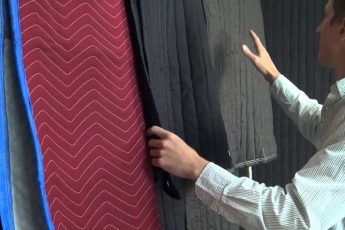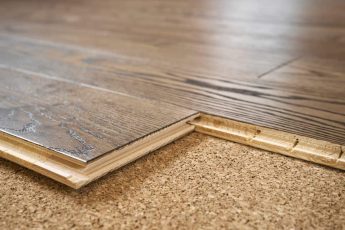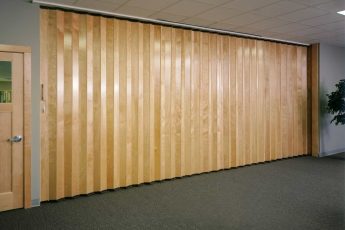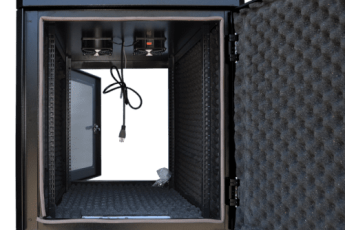Soundproofing a room is an essential part of improving the sound quality of a room. But there are some costs that you should consider before deciding on this task. These include labor, materials, and the size of the walls and ceiling. Fortunately, there are plenty of affordable options available that will fit within your budget.
Average cost of labor
Soundproofing a room can be done using a variety of materials. One popular material is mass-loaded vinyl, which comes in long rolls and is inexpensive but effective at cutting sound. It can be applied to walls, floors, and ceilings. Prices can vary depending on the material and how much you need to soundproof the room. This material can reduce noise to a significant extent, allowing you to sleep better and improve your quality of life.
Soundproofing a room costs between $200 to $500 on average. This includes the cost of new materials and professional labor. This will also include tools and equipment for the project. Soundproofing a room can also require removing old insulation and modifying the room’s structure, which will increase the cost.
A small room might only require soundproof paint and thicker carpeting. In a larger room, soundproofing may require adding mass-loaded vinyl to the walls. Other methods include adding soundproof doors and additional insulation.
Materials
There are a variety of materials that can be used to soundproof a room, including drywall and acoustic foam. However, the cost of materials for this project will vary considerably. For example, soundproofing drywall can run $40 per sheet versus $10 for conventional drywall. In addition, blown insulation, or loose fill, can cost about $1 per square foot. Soundproof curtains or wall hangings can also reduce noise transfer and can cost less than $100 per room.
If you’re looking for an affordable option, mass-loaded vinyl panels can be an excellent choice. These panels are easy to install and come in large rolls. They can be used in floors, ceilings, and walls. However, these panels are expensive compared to fiberglass insulation, which costs about $0.50 per square foot.
Another way to soundproof a room is by hanging heavy blankets or acoustic foam over windows or doors. These can help to reduce the noise and vibration that can come from the upper levels. Soundproofing can also be achieved by placing large pieces of upholstered furniture in the center of a room.
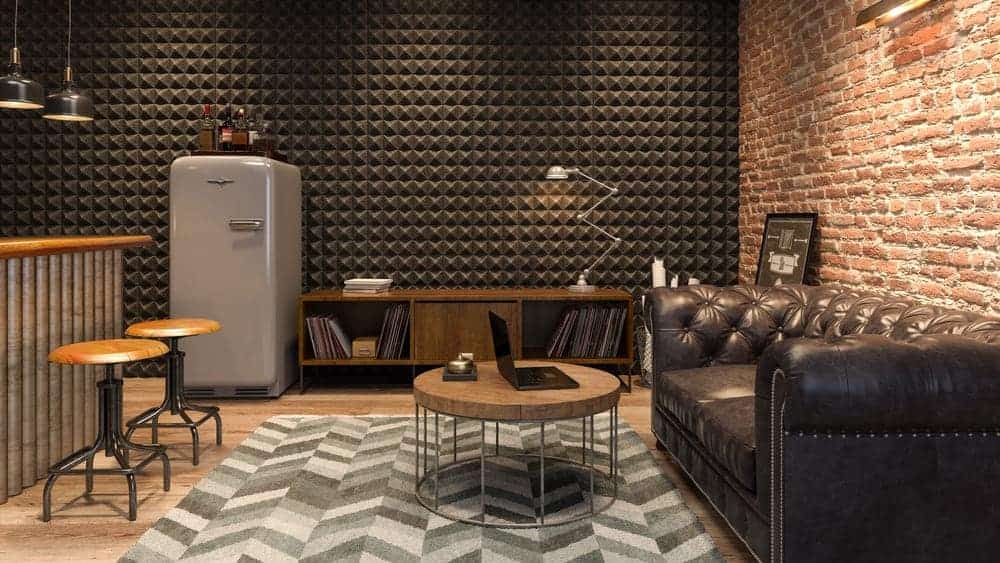
Size of wall
One of the most important factors when soundproofing a room is wall thickness. A wall that is too thin will not provide the necessary noise reduction. Fortunately, there are several methods that can help you achieve this. For example, you can add drywall or other materials to make the wall thicker, or use a soundproofing product.
Soundproofing materials are made from a dense material. Increasing the density of a wall will increase sound absorption. However, the extra thickness will only decrease sound transmission, not eliminate it. A minimum of 5/8″ thick drywall is recommended. But if the walls are already thick, you can add another layer. In addition to drywall, consider installing sound channels. These will reduce noise transmission and provide a more sound-proof room.
Another method of soundproofing is called decoupling. This method works by isolating two sides of the wall. The disadvantage of this method is that it takes up more space than a standard stud wall. It also requires tearing down and rebuilding the existing wall. This means that the wall thickness needs to be larger than the existing one.
Size of ceiling
Depending on your needs, there are several ways to soundproof a room. One of the most effective ways is to use multiple layers of insulation. This will help reduce the level of sound that comes through the ceiling and will reduce the noise level inside the room. Another way to soundproof a room is by using a decoupled system. This involves installing two layers of drywall in the ceiling and two on the walls. A layer of plywood or OSB can be placed under each sheet of drywall to help insulate the room.
If you live on the first floor, soundproofing your ceiling will reduce noise from upstairs. Even the smallest sounds that come from everyday life can contribute to loudness. Soundproofing can help you sleep better at night.
Length of drywall
When soundproofing a room, choosing the right thickness of drywall is crucial. Here is a quick comparison of five-eighths-inch sheetrock and one-half-inch sheetrock to determine which one is better. In general, thicker sheetrock is more effective than thinner sheetrock.
Soundproofing walls are made of a variety of materials, but the most important factor is the material. Most soundproof walls are constructed of 5/8-inch thick gypsum board. However, if you choose a different material, you’ll need to measure its thickness. This will ensure that the wall is as rigid as possible without compromising its ability to absorb sound.
Soundproofing walls can be installed without disrupting the existing walls. One inexpensive method is to build a second wall about 1/2-inch from the existing one. However, if you don’t like to lose floor space, you can also add a metal stud to the wall. These are one-half inch deeper than two-by-four wood studs, and will reduce sound much better than two-inch-thick drywall.

Thickness of curtains
The thickness of curtains can be an important aspect in soundproofing a room. Thicker curtains have more pores that trap sound waves. For best sound absorption, curtains should be at least 1.5 pounds thick. Adding pleating to the fabric can increase its density. However, this will also create more layers for sound waves to pass through.
Aside from reducing noise through windows and doors, curtains can also help soundproof a room. The reason is simple: sound waves travel through air. While a flat, smooth surface bounces back sound waves, a rough surface breaks them up. This means the sound waves are weaker than when they hit a flat surface.
Choosing the correct thickness of curtains to soundproof a room requires careful consideration. The best curtains cover the window’s entire area and extend past both sides of the window. To create a good seal, the curtains should be as close to the walls and ceiling as possible. You can use ceiling brackets to help bring the curtain closer to the ceiling and wall.
Using egg cartons as temporary soundproofing
Egg cartons are a cheap and easy way to soundproof a room, but they’re not the most effective method. There are other alternatives that are much easier to find, more effective, and cheaper. For example, you can use acoustic foam panels to insulate a room or use foam carpet underlays to reduce the level of noise.
Another option is to use recycled cardboard or Styrofoam, but it’s important to remember that these materials don’t have much mass. Egg cartons are very thin and don’t absorb sound as well as more expensive acoustical foams.
Another inexpensive soundproofing method is to fill egg crates with scraps of fabric or paper. You can secure the scraps to the walls using glue, starch, or wallpaper paste. You can also combine these temporary methods with other measures to reduce noise. For example, lowering the volume of the TV and stereo can be effective, but it won’t look very attractive.
Using mass loaded vinyl for permanent soundproofing
Mass Loaded Vinyl (MLV) is a versatile and cost-effective soundproofing material. It can be installed in multiple areas of the home, including the ceiling, floor, and partition walls. Other applications include office spaces, schools, and mechanical and computer server rooms. Manufacturers are increasingly experimenting with MLV and incorporating it into other materials for additional durability and strength.
Mass Loaded vinyl is manufactured in a variety of weights and thicknesses, but typically ranges from 0.5 to two pounds per square foot. Its density and weight give it superior sound barrier properties for the mid and high frequencies. It is easy to cut and adhere.

Mass Loaded Vinyl is a simple material that can be easily applied to a wall or ceiling. This material is sold in long rolls and is relatively inexpensive. One roll can cover an entire floor, wall, or ceiling. It is available in a variety of thicknesses, from 1/16″ to 1/4″ thick.

